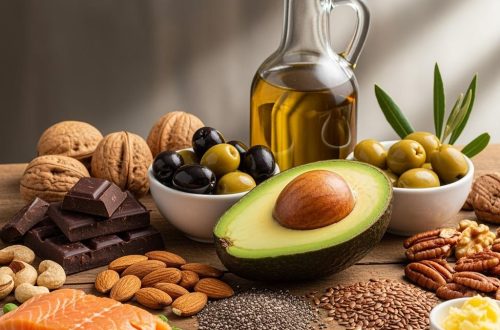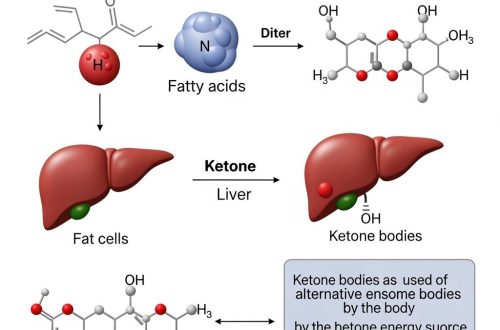A Powerful Combination for Weight Loss
Intermittent fasting (IF) and the ketogenic diet have individually gained immense popularity for their weight loss benefits. When combined, they create a potentially powerful approach that may enhance results beyond what either strategy might achieve alone. This article explores how these two methods work together, the science behind their synergy, and practical considerations for implementation.
Understanding the Basics
The Ketogenic Diet
The ketogenic diet is a high-fat, moderate-protein, and very low-carbohydrate eating pattern. By drastically reducing carbohydrate intake (typically to under 50g daily) and replacing it with fat, the body enters a metabolic state called ketosis. In ketosis, the liver converts fat into ketone bodies, which serve as an alternative fuel source when glucose is limited.
Intermittent Fasting
Intermittent fasting doesn’t dictate what to eat but rather when to eat. Common approaches include:
- 16/8 method: 16 hours of fasting with an 8-hour eating window
- 5:2 approach: Normal eating for 5 days and restricted calories (500-600) for 2 days
- Alternate-day fasting: Alternating between normal eating days and fasting or very low-calorie days
- OMAD (One Meal A Day): Consuming all daily calories in a single meal
The Synergistic Effects on Weight Loss
When combined, intermittent fasting and keto create a complementary approach that can accelerate weight loss through multiple mechanisms.
Faster Path to Ketosis
One of the most significant benefits of combining these approaches is the expedited transition into ketosis. Fasting naturally depletes glycogen stores more quickly than diet alone. When glycogen (stored glucose) becomes limited, the body must turn to fat for energy, thereby speeding up the process of ketosis that might otherwise take several days to achieve through diet alone.
Research has shown that fasting for even 12-16 hours can begin to deplete liver glycogen, initiating the production of ketones. For someone new to keto, incorporating intermittent fasting can reduce the adaptation period and associated “keto flu” symptoms.
Enhanced Fat Oxidation
Both keto and intermittent fasting independently increase the body’s ability to burn fat. When combined, they create a metabolic environment that maximizes fat oxidation. During fasting periods, insulin levels drop significantly, allowing for more efficient lipolysis (the breakdown of fat stores). The ketogenic diet further optimizes this process by limiting the insulin response even during feeding periods.
A 2018 study published in Obesity Reviews found that combining time-restricted feeding with a low-carbohydrate diet led to greater improvements in body composition compared to either intervention alone.
Appetite Regulation
Both ketosis and fasting affect hunger hormones in beneficial ways. Ketones themselves have appetite-suppressing effects, while fasting increases production of norepinephrine and potentially improves leptin sensitivity. The high-fat nature of the ketogenic diet also promotes satiety through slower gastric emptying and effects on appetite hormones like cholecystokinin and ghrelin.
Many practitioners report that the hunger typically experienced during initial fasting periods is substantially reduced when in ketosis, making adherence to intermittent fasting protocols easier.
Metabolic Flexibility
Regular cycling between fed and fasted states while maintaining ketosis may improve metabolic flexibility—the body’s ability to efficiently adapt to different fuel sources. This can lead to more stable energy levels and potentially greater fat-burning capacity over time.
Autophagy Benefits
Intermittent fasting triggers autophagy—a cellular cleaning process that removes damaged cellular components. While not directly related to weight loss, this process supports overall health and may prevent metabolic slowdown that sometimes accompanies calorie restriction.
Practical Implementation and Results
Typical Weight Loss Expectations
Many individuals report accelerated weight loss when combining these approaches compared to either method alone. Initial weight loss is often dramatic due to water loss as glycogen stores are depleted, but substantial fat loss typically follows.
Research suggests that individuals following a well-formulated ketogenic diet with intermittent fasting may experience:
- Faster initial weight loss (1-2 pounds more per week in early stages)
- Better preservation of lean muscle mass
- Reduced plateaus during weight loss journeys
- Improved insulin sensitivity
Common Protocol Combinations
Effective combinations often include:
- Keto with 16/8 IF: Perhaps the most accessible combination, eating keto meals within an 8-hour window daily.
- Keto with OMAD: A more advanced approach, concentrating all daily calories into one keto-friendly meal.
- Cyclical approaches: Some practitioners use longer fasting windows (24-36 hours) once or twice weekly while maintaining ketosis on eating days.
- Modified ADF with keto: Alternating between regular keto eating days and very low-calorie keto days (rather than complete fasting).
Potential Challenges and Considerations
Adaptation Period
The initial adaptation can be challenging. Combining fasting with keto might intensify “keto flu” symptoms for some individuals. Proper hydration and electrolyte management are crucial during this transition.
Individual Variability
Response to both keto and intermittent fasting varies significantly between individuals. Factors influencing results include:
- Metabolic health history
- Hormonal balance
- Activity levels
- Stress management
- Sleep quality
- Previous diet history
Special Populations
This combined approach may not be suitable for everyone. Caution is warranted for:
- Pregnant or breastfeeding women
- Individuals with a history of eating disorders
- Those with certain medical conditions, particularly diabetes requiring medication
- Athletes during high-intensity training periods
Optimizing the Approach
Strategic Exercise Timing
Some research suggests that exercising in a fasted state while in ketosis may further enhance fat oxidation. However, performance for high-intensity activities might be compromised until full keto-adaptation occurs, typically after several weeks.
Nutrient Density Focus
The restricted eating windows make nutrient density particularly important. Focus on high-quality fats, complete proteins, and low-carbohydrate vegetables to ensure micronutrient adequacy within fewer meals.
Monitoring and Adjusting
Regular assessment of progress and wellbeing is essential. Tracking metrics beyond scale weight—such as body measurements, energy levels, hunger patterns, and bloodwork when possible—provides a more complete picture of progress.
Conclusion
The combination of intermittent fasting and the ketogenic diet represents a powerful synergistic approach to weight loss. By simultaneously addressing insulin regulation, metabolic efficiency, and caloric intake, this combined approach may offer advantages over either strategy alone.
However, the most effective weight loss approach is one that can be sustained long-term. For some, the structure and clear guidelines of combining keto with intermittent fasting provide the framework needed for success. For others, a more moderate approach might prove more sustainable.
As with any significant dietary change, consulting healthcare providers is recommended, particularly for those with existing health conditions. When implemented thoughtfully and adjusted to individual needs, the keto-intermittent fasting combination may provide not just impressive weight loss results, but improvements in overall metabolic health.




